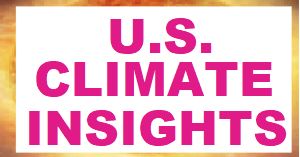Weather Outlook for the U.S. for Today Through at Least 22 Days and a Six-Day Forecast for the World: posted December 24, 2024
This article focuses on what we are paying attention to in the next 48 to 72 hours. The article also includes weather maps for longer-term U.S. outlooks (up to four weeks) and a six-day World weather outlook which can be very useful for travelers.
First the NWS Short Range Forecast. The afternoon NWS text update can be found here after about 4 p.m. New York time but it is unlikely to have changed very much from the morning update. The images in this article automatically update.
Short Range Forecast Discussion
NWS Weather Prediction Center College Park MD
Tue Dec 24 2024
Valid 12Z Tue Dec 24 2024 – 12Z Thu Dec 26 2024…Heavy rain and mountain snow returns to the West Coast region Wednesday
night……Showers and thunderstorms developing over portions of the south-central
states……Relatively mild conditions across the majority of the country leading
up to Christmas…An active weather pattern is expected to continue across the West Coast
region as an energetic storm track across the eastern Pacific brings in
multiple rounds of precipitation. The next in a series of atmospheric
river events is arriving across northern California and western Oregon
late tonight and continuing into Tuesday afternoon. Although the storm
system will be progressive overall, there will be a deep surge of moisture
ahead of the cold front that will intersect the coastal terrain and the
western slopes of the northern Sierra Nevada. Rainfall totals on the
order of 2-4 inches, and locally higher, are likely across this region
through Tuesday evening. Snow levels will be initially high, but should
fall some once the front passes. The heaviest snow from this event should
affect the highest terrain of the central Sierra Nevada, with up to a foot
of accumulation possible, affecting travel through the mountain passes.
Winter weather advisories and winter storm warnings are currently in
effect for this event. After a brief break on Christmas Day, the next
round of moisture moves in towards the West Coast and brings another
substantial round of rain and mountain snow, along with windy conditions
as the pressure gradient tightens in response to a very intense surface
low off the coast of British Columbia.A relatively weak low pressure system crossing the Northeast U.S. region
on Tuesday will produce light to occasionally moderate snow from the
central Appalachians to New England, increasing the odds of a White
Christmas across this region, especially when combined with existing snow
cover from recent snowfall. This system quickly exits offshore by Tuesday
evening. Farther to the south across Texas, a separate surface low
develops, and increasing southerly flow from the western Gulf of Mexico
ahead of that system will fuel the development of scattered to numerous
showers and some thunderstorms, mainly from eastern Texas northward across
much of Arkansas and into southern Missouri through Christmas morning.
Some locations may get over an inch of rainfall with this event, and thus
a Marginal Risk of excessive rainfall is valid for these areas.Much of the East Coast region will have a moderation trend in the cold
temperatures going into Christmas Eve, as the arctic surface high moves
offshore and milder air from the Ohio Valley advects eastward across the
region. The remainder of the country should enjoy generally above average
temperatures by late December standards, particularly across the central
and southern Plains where daytime highs could be 15-20 degrees above
average. This would equate to highs well into the 60s and 70s for much of
Texas.






